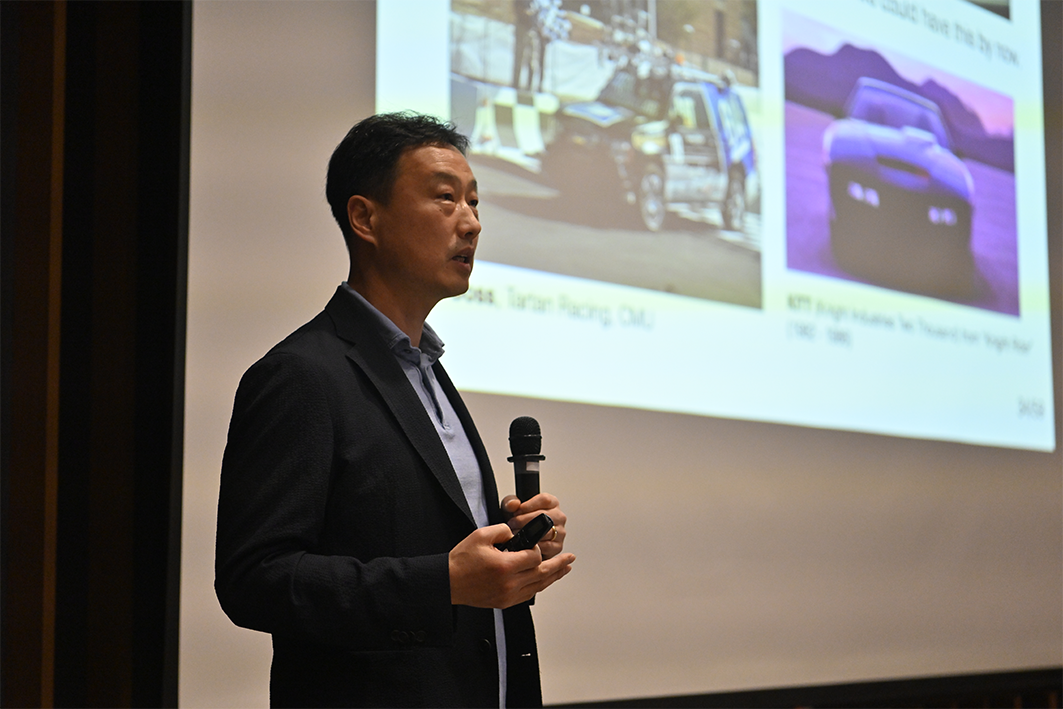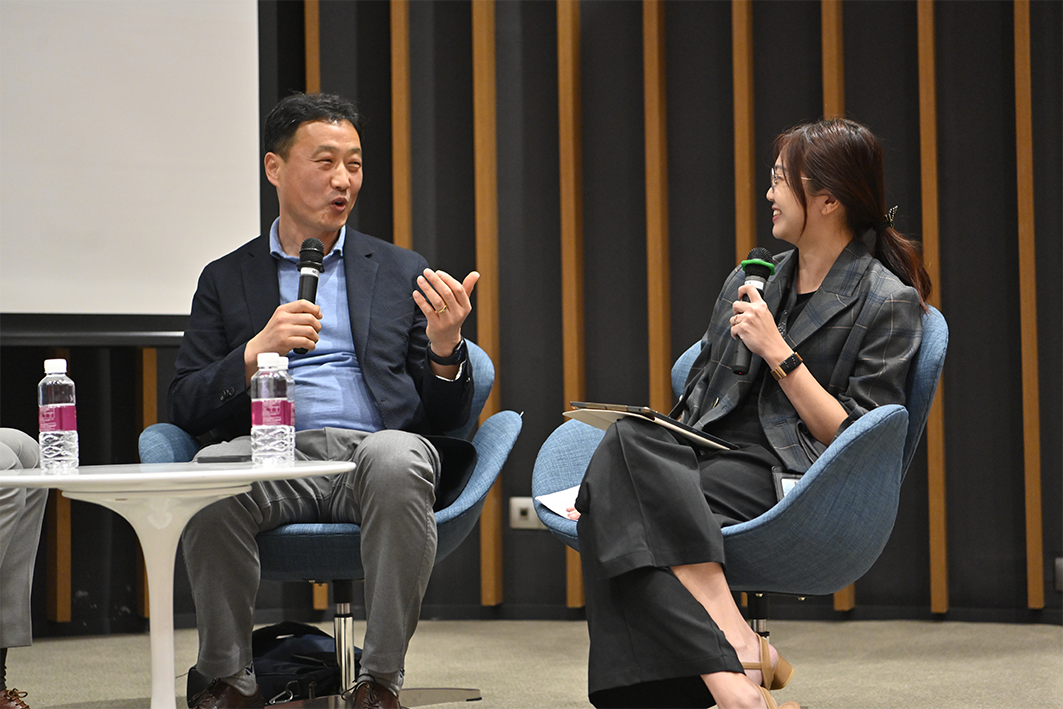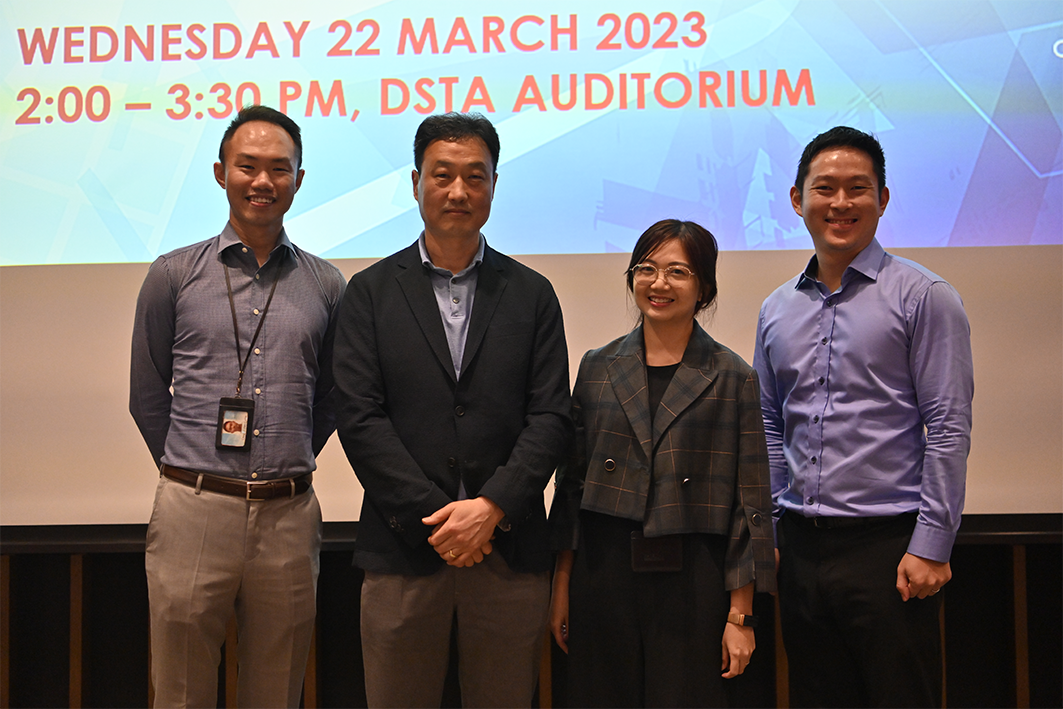24 Mar 2023
How can autonomous robots duplicate human capabilities, and how can they be integrated into human society? These were just some of the questions addressed by Dr Youngwoo Seo, Executive Vice President of Hanwha Aerospace and an expert in the field of autonomous systems, at a DSTA Lecture on 22 March 2023.
As the latest guest of our special lecture series, an initiative in which industry leaders are invited to share their expertise with our staff, Dr Seo provided invaluable insights into the latest developments of automated robotics and how they are utilised in various industries. With the once-fictional concept of autonomous robots becoming reality, Dr Seo emphasised the importance of designing robots that can work safely and effectively alongside humans.

Dr Seo first delved into the notion and complications of developing autonomous capabilities for robotics without human input, and the risks associated with employing such robots in our everyday lives. For instance, as traffic accidents involving self-driving cars have shown, there are nuances in human behaviours that contemporary robots might lack the capacity to respond to. To tackle this challenge of designing automated robots that can work seamlessly with humans, Dr Seo noted that there is a need to model tacit human intuition as a framework to guide the development of autonomous systems.
Expanding on this proposition, he elaborated on the challenges of implementing and optimising various levels of autonomy in robot behaviour for a dynamic environment. He detailed the concept of higher-level planning, which involves predicting human behaviour and motion, as well as using data-driven methods such as pose estimation and environment mapping for better situational awareness. Such practices require estimating causal relations – rather than simply identifying correlations – by tracing sensory inputs in humans and robots. To achieve this, researchers must have a deep understanding of not just of autonomous system functioning, but of human cognition as well.
When it comes to the feasibility of collaboration between humans and robots, Dr Seo suggested marrying model-based approaches with data-driven implementation. Aside from quantifying human intuition, there should be a focus on developing an optimal method of sliding autonomy between humans and robots to ensure system effectiveness and maximise their respective strengths.

Concluding with a Q&A session facilitated by Director (Capability Development) Cai Jialing and Senior Programme Manager (Land Systems) Collin Chng, our technologists left the lecture with newfound insights into the world of autonomy.
Engineer (Air Systems) Tan Shao Wei, who sought to broaden his professional understanding of autonomous systems, said: “I got a better understanding of the various levels of autonomy and its current landscape with regard to civilian and military applications. Dr Seo’s sharing gave me new perceptions regarding the difficulty of implementing autonomous systems in our complex and dynamic environments, especially the level of detail and control needed to pilot its applications in Singapore’s context.”
Engineer (Digital Hub) Perrie Lim added: “Dr Seo’s talk reinforced the importance of human-robot interaction in my research. While robots are capable of high-functioning tasks, we humans play a crucial role in ensuring that they are guided and supported through more complex situations. I look forward to the endless possibilities of robotics and autonomous systems!”

Dr Seo was also a guest speaker at the Singapore Defence Technology Summit 2023, a gathering of global defence and technology leaders hosted by DSTA, where he partook in a plenary session examining the wave of digitalisation and the pursuit of digital superiority across industries.
